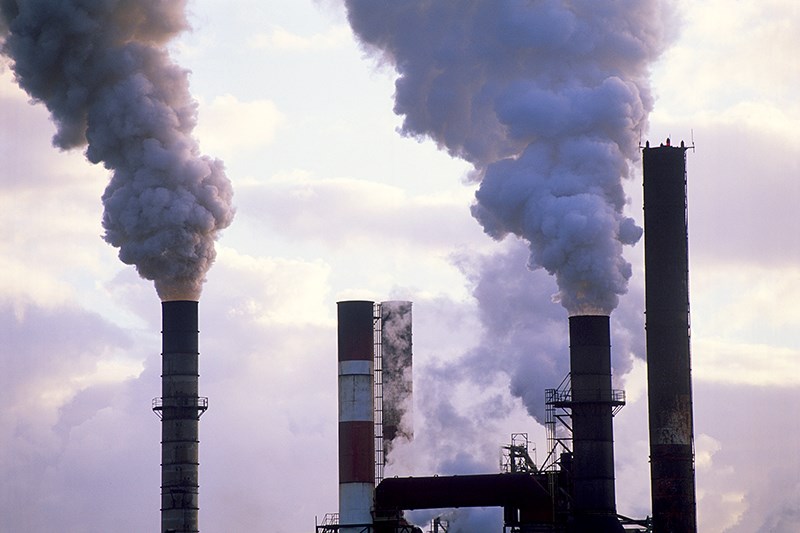For the past two decades, representatives from countries around the world have been meeting annually to attempt to address the challenges the world faces in dealing with climate change.
Everyone should now be aware that, if we continue to emit greenhouses gases at our current rate, we will reach unprecedented atmospheric levels by 2100, which are estimated to cause a rapid five-degree (Celsius) rise in global temperature by the end of the century.
This may not sound like much but it was only a 5 C decline in average temperature that plunged the planet into the last ice age — and that resulted in the area that is now the Tri-Cities area being buried under a 2 km-thick sheet of ice.
A 5 C rise in temperature will have consequences of a similar magnitude and is likely to catapult the world into a series of devastating droughts, which would bring about acute ecosystem changes and destroy our ability to feed the nine billion people estimated to be alive in 2100. Rising ocean levels would cause the evacuation of many coastal cities.
We are currently facing many challenges helping refugees from Syria — just one country — so consider what it would be like with many more millions of people displaced from their homes across the globe.
Clearly, we must not allow this to happen to what is presently a very inhabitable and life-sustaining planet. Thus, there is no alternative: We must reduce greenhouse gas emissions.
Back in 1992, many countries started to take climate change seriously at a UN Conference in Rio de Janeiro, when the developed nations agreed they should try to cut emissions by 5% from their 1990 levels by 2012.
This plan was finally drawn up as the Kyoto protocol in 1997 which a federal Liberal government immediately ratified.
But this plan required endorsement by the countries responsible for 55% of the world’s emissions to take effect. This did not happen until 2004, when Russia, to everyone’s surprise, signed up. The protocol was undermined, however, by the U.S.A., which remained non-signatory; in addition, concerns were continually raised the protocol was unfair because developing countries were not required to reduce their emissions.
In 2007 at the UN Conference in Bali, most participating countries decided a new action plan was needed to replace the Kyoto protocol. At the UN Conference in Copenhagen in 2009, a landmark agreement was reached when both developed and developing nations determined they must all work together to collectively reduce emissions. Still, the conference was considered to have failed because no binding treaty was agreed upon.
But in Cancun in 2010, a ratified agreement was drawn up. Meanwhile, mounting evidence of severe storms and increasing droughts accumulated. In Canada, the Harper government withdrew from the Kyoto Accord in 2011, continued to bury its collective head in the tar sands and ignored the perils of climate change, which earned us a number of Fossil Awards at successive UN Climate Change conferences.
In preparation for the upcoming Paris Conference, 146 countries have already agreed to some emissions reductions. These reductions are estimated to result in an increased average temperature of only 2.7 C by 2100.
While this is a vast improvement over the predicted 5 C rise if no actions are taken, it is still regarded as insufficient to avoid some devastating consequences of climate change.
More reductions will be required at the Paris conference. As part of this new agreement, the developed nations of the world also need to provide funds that will help the developing countries invest in clean technology. An important consideration must also include mechanisms to stop deforestation in parts of the world like the Amazon basin. Trees remain one of the best systems of carbon storage that we have. It is estimated humans have already increased the temperature of the planet by 0.8 C. Predictions are that we must limit temperature change to 2 C or less to avoid irreversible and catastrophic changes to the planet.
It’s important to note that some countries have already achieved significant reductions with more anticipated in the near future. The European Union, for example, is providing true leadership by having already achieved significant reductions even with an increase in economic growth. They have also made a very achievable commitment to further reduce emissions 40% below 1990 levels. China has already reduced its consumption of coal (the worst fossil fuel) and is now the largest producer of wind and solar power on the planet.
Despite all the gloom and doom, progress is finally taking place. With a newly elected Canadian government that appears to be taking the need to reduce our emissions seriously, it’s enough to make me an optimist environmentalist.
--Elaine Golds is a Port Moody environmentalist who is conservation/education chair of the Burke Mountain Naturalists and member of the boards of the Colony Farm Park Association and the Port Moody Ecological Society.



